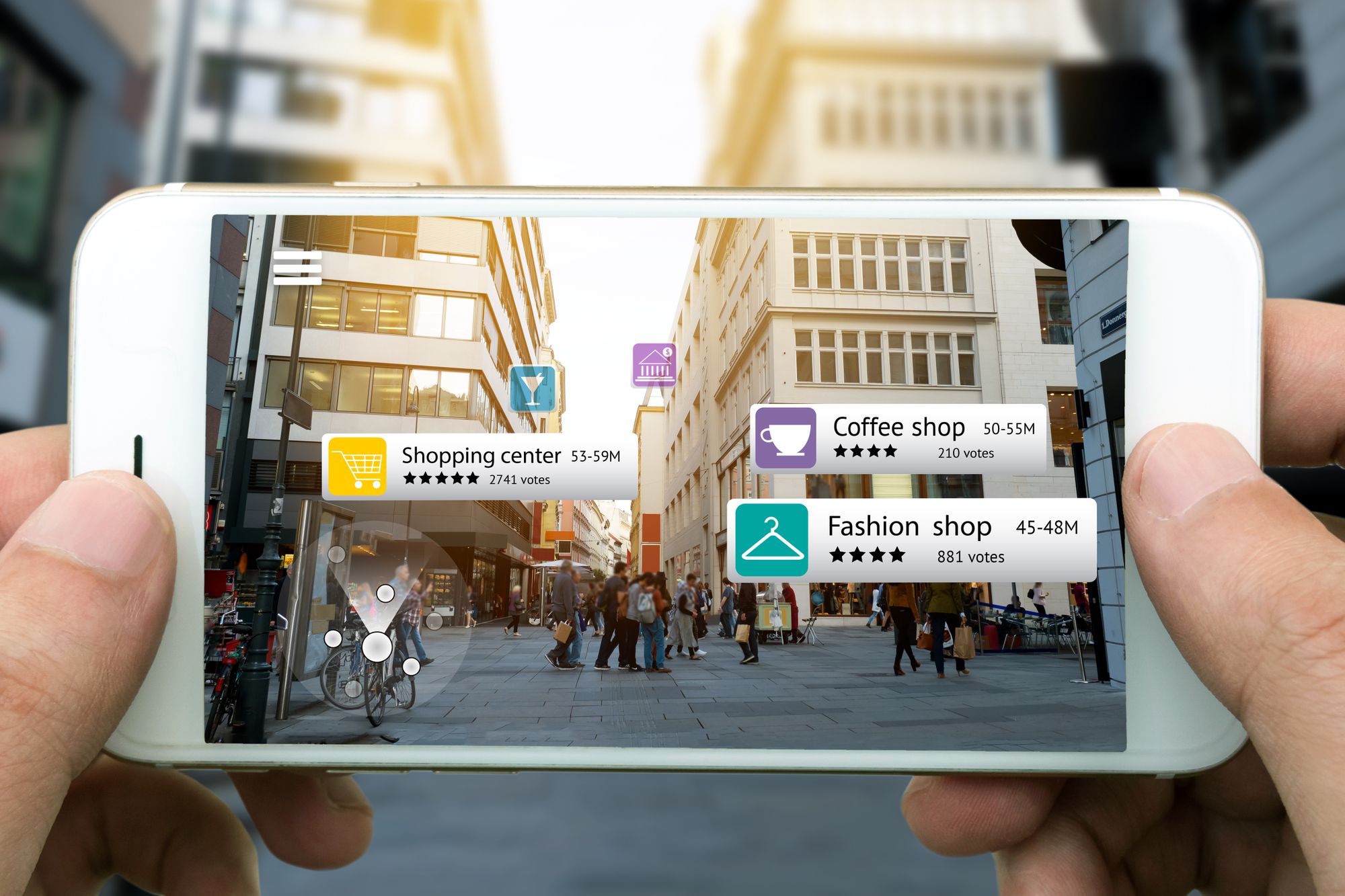
When WebAR is Needed Instead of Mobile AR
The web is quickly becoming the go-to platform for AR and VR content. The reason? Although they are similar in some respects, web and mobile AR have key differences that make them useful at different stages of the business development process.
Table of Contents
The web is quickly becoming the go-to platform for AR and VR content. The reason? Although they are similar in some respects, web and mobile AR have key differences that make them useful at different stages of the business development process. According to Gartner, "AR and VR have the potential to boost the efficiency and effectiveness of virtual sales processes."
WebAR can be used to prototype an application and determine if it's worth investing more time and developing a native app. Mobile AR is most suitable as a marketing tool because of its ability to show customers what their future purchases will look like before they buy it.
For example, you could use AR to create 3D models of furniture and see how they would look in your room without buying anything or hiring an interior designer, eliminating costly mistakes before committing resources to new projects or products.
In this article, you'll learn about the differences between WebAR and mobile AR.
What is WebAR?
WebAR is an augmented reality experience available and accessible via the web rather than an app. That means users don't need to install or download an app to access this viewing experience. For companies, developing a new app can be relatively costly, time-consuming, and labor-intensive. Because of this, WebAR is becoming increasingly popular with companies looking for frictionless AR solutions.
With WebAR, you can focus on delivering a compelling experience. WebAR is flexible and cost-effective, making it possible to access an AR experience through PCs, mobile phones, and tablets. The growth of WebAR technology is accelerating as mobile browsers begin to support it.
With browsers now allowing WebAR to access gyroscopes, magnetometers, and accelerometers, developers have the tools and technology to develop creative AR experiences.

What is Mobile AR?
Mobile AR can be integrated into a native app to provide an immersive and engaging AR experience. This type of AR experience offers several benefits to the end-user. As much as WebAR has its perks in democratizing AR, native apps still dominate by leveraging specific advantages of individual operating systems. It uses tools that can provide extensive recognition of objects, depths, surfaces, and lighting.
WebAR vs. Mobile AR: Where They Differ
Mobile AR is more advanced in research and development, meaning they have more features than WebAR. As a result, developers can access numerous user features and experiences such as multiplayer gaming, indoor navigation, and more.
On top of that, it has the distinct advantage of leveraging the full hardware capabilities of the mobile device. Web apps running in the browser have limited access to processing power, system memory, etc. which can impact 3D performance. Mobile AR performs better thanks to unlimited access to system resources, allowing for better animations and interactivity.
One significant drawback for mobile AR is the need to install or download an application. Most people would rather skip this step until they have a chance to check out the app features and decide whether they are really interesting to them. Additionally, making an app that works on multiple phones and operating systems is more challenging, costly, and requires more testing.
"Web AR experiences are faster to develop, and far easier for consumers to engage with en masse. With mobile AR, you need to build different versions of the experience for different phones and operating systems, which takes longer, and potentially freezes out a segment of your audience if you decide that older versions of Android aren’t worth your time and investment,” explained Dave Beck, XR Training Leader, and Managing Partner at Foundry 45.
“Plus, consumers have less friction when it comes to web-based AR and VR experience, since they don’t need to install anything locally,” Beck continued.
By contrast, WebAR enables users to interact without any extra steps. To access it, you can simply scan a QR code that links to a website with AR functionality. Because of this, mobile devices can now benefit from WebAR twice as much as app-based devices do. Similarly, having a uniform user experience across multiple platforms is an appealing proposition to companies.
Though WebAR is not yet as powerful as applications-based AR, you can use creative workarounds to make it much more helpful and practical.
Here is a brief comparison table with the differences between WebAR and app AR:
WebAR Examples
Purina 28-Day Challenge
Purina is a leading dog brand committed to enhancing dog welfare. In a recent campaign, Purina came up with an innovative 28-day challenge to help pet owners improve their pet's diet and well-being in a month. In developing a WebAR experience, they wanted to communicate directly with their customers and accompany them on their journey.
The challenge involves a series of dietary changes and modifications that need to be incorporated immediately into the dog's daily routine. By using volumetric capture, the brand can rapidly and effortlessly develop world-tracking animal avatars.
Jumanji: The Next Level
The entertainment industry has also adopted modern marketing technologies to engage movie fans by enabling them to experience movie plots and connect with the characters. For Jumanji, users interact with the WebAR experience using their voice to activate a virtual journey through different locations, engaging in gameplay similar to the film's characters.
With WebAR, movie fans will have the chance to explore a fun and interactive way to drive brand awareness for future releases. That increases ticket and merchandise sales.
Kinder Safari Experience
The use of a WebAR experience in the supermarket illustrates how brands can improve product engagements. The Kinder Safari experience was made available in major UK supermarkets, together with in-store signage and a campaign to drive sales of Kinder Eggs. With the WebAR technology, passersby can easily use their phones to experience an African safari.
The interactive 3D Safari experience is available in-store or at home whenever the shopper wishes. Customers have the option of saving the viewing experience on their mobile home screen. It's an excellent example of how augmented reality is used in marketing and serves as a great inspiration for future campaigns.
Mobile AR Examples
Pokemon Go
The Pokemon Go app is one of the most widely used applications of augmented reality. It's a mobile-based application about finding and collecting Pokemon. The game is innovative and engaging by combining AR with the characters of a beloved franchise and delivering it to millions of mobile users.
Users can find virtual Pokemon in real-world settings, catch them, and train them for battle with a camera and gyroscope. The game encourages physical activity and helps people explore their local environments.
Experience AR through Blippar
Blippar is another excellent example of a mobile AR. It enhances the viewing experience by leveraging the use of the voice command "Blipp," which is a word that gives users access to relevant content by scanning it with their mobile devices. It provides users with new interactive content such as posters, ads, and labels.
Ikea Place
Ikea Place is a mobile AR app geared towards home decor. The application provides shoppers the opportunity to view products in their homes without having to assemble them. With the app, you'll be able to see which items will fit in the most optimal places in your home based on the entire floor plan.
In addition to that, the drag-and-drop feature and color selection options almost take away the fun of shopping at IKEA.
How Salsita Enabled Purple Hyro's 360° Video Experience
While WebAR and app AR offer exciting possibilities for delivering creative and engaging experiences, you should decide which is best for your organization based on your target market, budget, and business objectives.
Salsita is a development agency that helps build high-quality applications and immersive user experiences to enhance your organization's brand. By partnering with Salsita, Purple was able to revolutionize and energize sales presentations through an immersive 360° video and futuristic touchscreen. To achieve this, Salsita helped to create an innovative set of web applications that includes an extensive touchscreen interface, touch and voice control, and real-time collaboration.
To get started on creating AR, VR, and 3D experiences, reach out to Salsita here.








